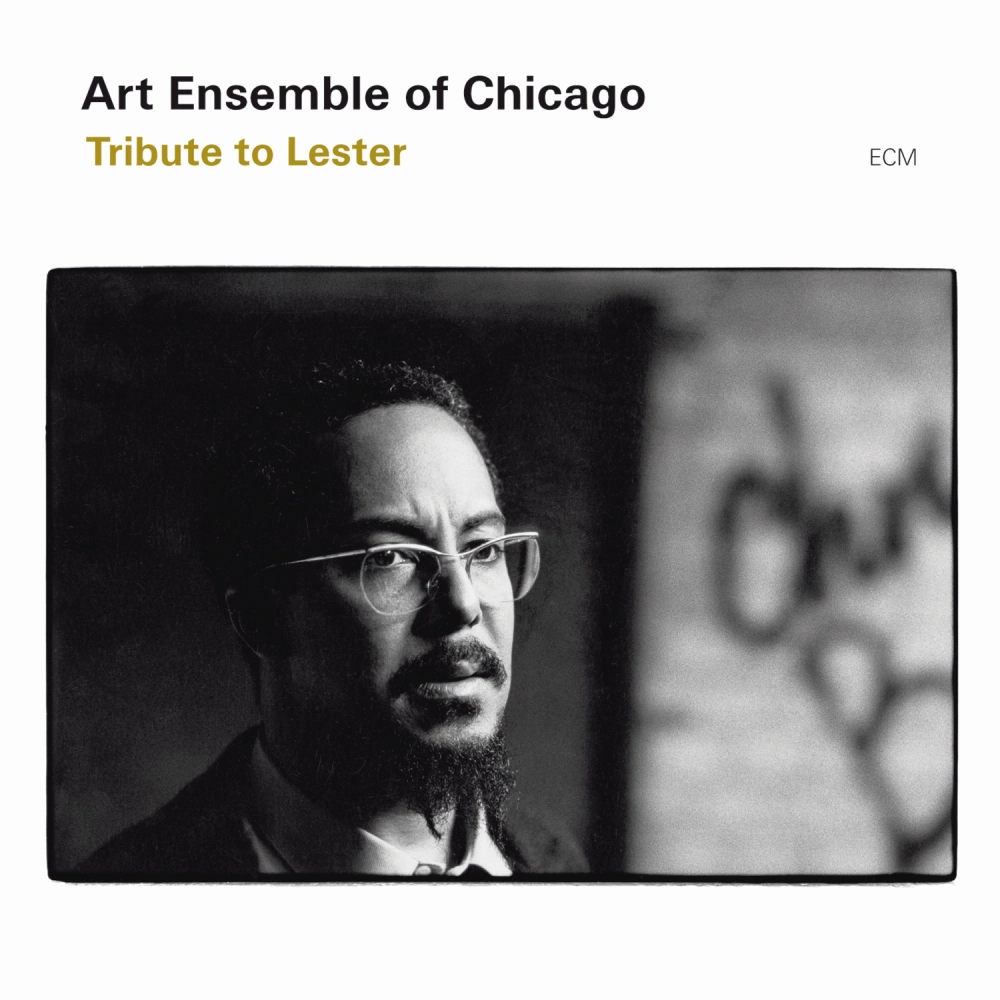When AEC trumpeter Lester Bowie died in November 1999 at the age of 58, the jazz world lost one of its great originals – a flamboyant sound-painter, a great soloist, a musical philosopher, and a charismatic performer. On this memorial album his friends and colleagues give a sense of his freewheeling, larger-than-life character. Powerful and uncompromising, “Tribute To Lester” is the first new Art Ensemble recording on ECM in almost 20 years, and one of their very finest discs.
Tribute to Lester
Art Ensemble of Chicago
- 1Sangaredi
07:42 - 2Suite for Lester
05:22 - 3Zero / Alternate Line
09:16 - 4Tutankhamun
08:10 - 5As Clear as the Sun
12:41 - 6He Speaks to Me Often in Dreams
13:52
The original alliance of the Art Ensemble and ECM resulted in the now-classic albums “Nice Guys”, “Full Force”, “Urban Bushmen” and “The Third Decade” – all recorded between 1978 and 1984. In these discs (as the press and the group members themselves concurred) the AEC’s cutting-edge improvisations benefitted enormously from Manfred Eicher’s input as producer. At last the listener could hear all the rich and complex detail of the Art Ensemble’s sonic world and follow all aspects of the musical argument, whether they were playing lyrically, dreaming up visions of Africa in spontaneous drum choirs, or locking horns in full force blasts of untrammelled sound-energy.
After a momentous Art Ensemble Munich concert in 1995 with a quartet line up of Bowie, Mitchell, Favors and Moye, plans for a new round of collaborations with ECM were drawn up. (For most of the previous decade, contractual obligations with a Japanese label had prevented the group from recording elsewhere.) The first outcome of the renewed alliance was Roscoe Mitchell’s award-winning “Nine To Get Ready” album, recorded in 1997.
With the death of Lester Bowie two years later, the Art Ensemble lost a flamboyant frontman, a charismatic performer and the participation of one of the most creative trumpeters in the music’s history. His trademark smears and slurs and growls, his half-valve effects, his wide vibrato and his anarchic humour brought new colours and ideas to jazz. Bowie, not given to false modesty, saw himself as a link in a tradition that extended from Louis Armstrong through Dizzy Gillespie to Miles Davis and Don Cherry and was outspokenly impatient of musicians who settled merely for historically correct re-creation of jazz styles. The Art Ensemble’s very motto and rallying cry “Ancient to the Future” implied that study was meant to bring a musician forward, not mire him in the past, a point that is still worth emphasizing.
Correspondingly, “Tribute to Lester” touches on the spirit of the blues that was Bowie’s first inspiration – he came up playing with the bands of Albert King and Little Milton among others – and also reflects upon the AEC’s own history. Mitchell ably carries the “frontline” role by himself, a reminder that the AEC was originally his group (in the early years it was the Roscoe Mitchell Art Ensemble). The juxtaposing of space with high intensity playing recalls the era of Roscoe’s landmark album “Sound” (1966), which also marked the first collaborative recordings with Bowie and Malachi Favors.
Malchi Favors’ tune “Tutankhamun”, meanwhile, was a staple of the band’s set in their formative Paris years, when the AEC’s famously theatrical performances – as well as their musicianship – made a profound impact on European players.
Bowie’s “Zero” a “freebop” tune which first surfaced on “The Third Decade” is interwoven here with Mitchell’s composition “Alternate Line”. A centrepiece of the album is Mitchell’s concise yet wide-roving “Suite for Lester” which works a range of moods and colours which are as unpredictable as its subject. Roscoe moves between plangent soprano sax, pretty neo-baroque and a booting blues-blasting bass saxophone line that recalls the AEC’s signature tune “Odwalla”. Here and elsewhere Malachi Favors and Don Moye offer the empathetic, near-telepathic support honed through so many years of playing together.
“Sangaredi”, which opens the disc, is a jungle of interlocking tribal beats, in the tradition of earlier AEC percussion workouts like “Bush Magic”. This “Tribute to Lester” concludes with two collective improvisations – “Clear As The Sun”, with superb circular-breathing-powered soprano saxophone from Mitchell, and “He Speaks To Me Often In Dreams”, a beautifully detailed developmental percussion piece with bells chiming magically and “little instruments” (the use of toys, whistles, bike horns and co was another AACM innovation) providing indeterminate asides, like a window open onto the street…
Lester Bowie’s message, and the Art Ensemble’s, will continue to speak to improvisers everywhere for generations to come.
You need to load content from reCAPTCHA to submit the form. Please note that doing so will share data with third-party providers.
More InformationYou need to load content from Turnstile to submit the form. Please note that doing so will share data with third-party providers.
More InformationYou are currently viewing a placeholder content from Facebook. To access the actual content, click the button below. Please note that doing so will share data with third-party providers.
More InformationYou are currently viewing a placeholder content from Instagram. To access the actual content, click the button below. Please note that doing so will share data with third-party providers.
More InformationYou are currently viewing a placeholder content from X. To access the actual content, click the button below. Please note that doing so will share data with third-party providers.
More Information












